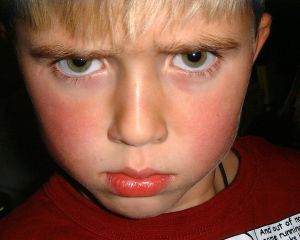 Not all adopted children will have attachment disorders. Even older infants, toddlers and older children may not suffer from attachment related difficulties. If children have had nurturing and loving attachments before being placed with adoptive families they may adjust well and never show signs of having attachment issues.
Not all adopted children will have attachment disorders. Even older infants, toddlers and older children may not suffer from attachment related difficulties. If children have had nurturing and loving attachments before being placed with adoptive families they may adjust well and never show signs of having attachment issues.
Attachment disorders occur most often when a child doesn’t have a good opportunity to learn how to make attachments during the first three years of life. There are three primary kinds of attachment disorders:
- The Non-Attached Child, is a child who was deprived of any opportunity to make a strong primary attachment. There was not a reliable, consistent care taker and the child’s basic needs were only met in a minimal way, or not at all. A non-attached child has no reason to trust anyone who is now in the role of primary caretaker. A non-attached child has no capacity to invest in a new significant relationship.
- The Inadequately Attached Child has usually experienced interrupted or sporadic care. There were times when the primary caretaker was able to met the child’s needs, but not in a consistent or regular way. Inadequately Attached children are unsure about the future and may behave in immature ways. They are usually developmentally behind. These children can be manipulative and tentative about making new relationships.
- The Traumatized Child is usually a child who was severely traumatized in an early relationship. The trauma usually involved a major breach of trust or some form of abuse inflicted by the primary caregiver. These children may have a value of attachment, but may no want or feel safe enough to trust in a new relationship.
The best treatment for all three categories of attachment disorder is a stable, nurturing family that can tolerate:
- A child’s indifference, ambivalence, or hostility to a new family.
- A child’s developmental delay and immature behavior and responses.
- A child’s long-term testing while the earlier developmental gaps are addressed, or the earlier trauma is emotionally processed.
The next Attachment Blog will address some of the early parenting ideas for identifying and dealing with possible attachment disorders with adopted children.
![]() Special Needs and Adoption-Related Terms:
Special Needs and Adoption-Related Terms:
A | B | C | D | E-F | G-H-I | J-K-L | M | N-O | P | Q-R | S | T-U-V-W-X-Y-Z
For more information about parenting special needs children you might want to visit the Families.com Special Needs Blog and the Mental Health Blog. Or visit my personal website.
Photo credit for this blog entry:  (no use restrictions for this photo)
(no use restrictions for this photo)

